Top News

The two entrepreneurs who sold DiagnosisOne to Alere in 2012 buy back their former business, now known as Alere Analytics, to form Persivia. Alere bailed out of healthcare in the fall of 2014 by selling Alere Health to Optum for $600 million in an attempt to pay down company debt, with several of Alere Health’s products reverting back to their original owners. Alere is doing better after sticking with its diagnostics business – shares are up 43 percent in the past year after a price run-up that started in early January.
Reader Comments

From Stay KLASsy: “Re: Epic. The company has been abuzz in recent years about a downward trend in KLAS ratings. KLAS identified a distinct trend among Epic clients who have gone live in the past three years, who as a group are unhappy compared to customers that have been live longer. KLAS made the point in a presentation in Deep Space that was emphasized much more heavily in private meetings with Epic leadership. KLAS says Epic customers need Sherpas to help them up the mountain. Many of those recent go-live customers will be executing a ‘Sherpa Plan’ to make it all better. Let the flailing begin.” I’m always amazed that Epic’s high-paying customers happily accept full responsibility for helping the company solve its problems. Software is an ongoing relationship business – nobody who spends $200 million to implement software expects to just walk away with their purchase since they, too benefit from product improvements, but Epic excels at convincing passionate and heavily invested users to spend even more of their time to help it improve its products and services. Even Apple doesn’t have its own 11,400-seat underground auditorium.

From Truven Watcher: “Re: Truven’s Q1 results. Earnings are good, but increases in revenue were due solely to 2014 acquisitions. Debt has risen from $800 million at launch to $971 million today and lines of credit are decreasing from use with nearly zero free cash flow to invest in the business. No wonder Veritas Capital is looking to do an IPO – with lack of investor return, nobody would pay a premium to the $1.3 billion Veritas paid to buy the company from Thomson Reuters.” The great thing about IPOs in general (if you’re selling rather than buying, anyway) is that the army of calculator-fingering analysts who will later shred the company for missing revenue expectations by a tiny percentage are noticeably absent in critiquing whether the IPO price is fundamentally worth it – buyers are simply rolling the dice that the company’s story will be good enough to sell shares profitably to a greater fool down the road. The other great thing about being an IPO seller – other than making fistfuls of money – is that you as an expert insider know far more about what you’re selling than your buyer does, allowing you to set the price at which you’re willing to give up your shares to a seller who doesn’t have a clue. Veritas Capital paid $1.25 billion for what is now Truven in 2012 is rumored to be planning a $3 billion IPO, which would be a heck of a return after just three years of seemingly modest performance.
From Solemn Observer: “Re: Welltok’s acquisition of Predilytics. Welltok CEO Jeff Margolis was on the board of Predilytics, which has high-profile investors who may have seen Welltok as a higher-profile company with a better path to liquidity and value. All of these patient/consumer engagement companies are looking for an analytics angle.”
From Jerry Aldini: “Re: Ontario eHealth program. Still dealing with the fallout after years of controversy.” Scandal-ridden eHealth Ontario and CGI go to arbitration over their dueling lawsuits related to CGI’s firing in 2012, as the parties blame each other for missed deadlines and deliverables on the $37 million diabetes registry contract.
From F.Y. Cannibal: “Re: Meaningful Use. The Society for Participatory Medicine has complained to HHS about the proposed change from 5 percent of patients to just a single patient who must view, download, or transmit their information to meet the MU threshold.” I support the ability of patients to access their own information electronically, but I don’t agree with the need to protest the proposed MU changes, for the following reasons:
- Doctors can’t control what their patients do. The unintended consequence of requiring them to view their information electronically is that patients will be tricked or forced into doing so, which seems to run counter to the demand that patients be willing and empowered participants in their health.
- Providers already can’t hit the minimal 5 percent of patients threshold, indicating a clear lack of patient interest that isn’t the practice’s problem.
- The purpose of Meaningful Use (other than interfering with the EHR free market using taxpayer dollars to fund a clash-for-clunkers program) was to encourage provider EHR adoption, not to force patients to change their behaviors against their will. The proposed “one patient” standard proves that the provider offers the capability and that should be threshold enough. Patients aren’t Meaningful Users.
- Patient advocates should be marketing V/D/T to patients to create demand, not holding doctors accountable for the lack of it.
- Lack of a randomly chosen V/D/T Meaningful Use threshold isn’t a vote against patient access or patient portals. It just means consumers need to demand it, use it, and be willing to change providers if they don’t get it. There’s inherently nothing pro- or anti-patient engagement in letting the market determine how widely offered and used patient engagement tools are. Just because something seems inherently desirable doesn’t mean the government needs to get involved to ensure that it happens.
From Sassy Lassie: “Re: Washington HIMSS board elections. All candidates appear to be vendors.” I’ve served on a HIMSS state chapter board and disproportionate vendor representation is their biggest problem. Health system people don’t have the time or motivation to participate, so vendor employees who are anxious for resume-building activities and networking opportunities dominate leadership positions, presenter slots, and meeting attendance. I won’t attend any event where vendor presenters outnumber provider ones – my assessment (as unintentionally insulting as it may be to vendor people) is that I’m not willing to spend my time and money to hear a vendor employee speak. I don’t question their competence or experience, just their ability to deliver an objective and interesting message after being subject to subtle, non-stop employer brainwashing and implicit muzzling. Chapter-level presentations aren’t usually very good in my experience anyway – chapters have to settle for whoever they can get and most of those folks are begrudging slot-fillers rather than brilliant, inspiring presenters who will take the time to craft a compelling message. My lessons learned as a chapter officer planning conferences are: (1) allow a ton of networking time; (2) schedule the day to end early since locals are more likely to sign up if they can get home by their normal quitting time; and (3) put most of your time and energy into feeding them.
HIStalk Announcements and Requests
My latest pet peeve: needy people who post dramatic Facebook non-sequiturs such as “I hate people” or “my life sucks,” desperately hoping one of their “friends” will urge them to elaborate so they can share an outburst of grammatically-challenged emotion in search of shallow empathy from people who aren’t interested enough to actually drop by or pick up the phone.

Hopefully it wasn’t lost in all the fun Memorial Day activities that the holiday is intended not for cookouts and car races, but rather to honor those who died while serving in the military.


Mrs. B sent over photos of her California first graders with severe disabilities using the sand and water table provided via our DonorsChoose project, saying they love the sensory learning time that also improves their social skills. Ms. T says the excitement and reading participation her Oklahoma sixth grade class has been “astounding” as they use the three iPad Minis we bought them for reading programs and to record themselves delivering presentations. I defy you to look at those faces and convince me that the money wasn’t well invested.
I was thinking about how expectations that patient portals be de-siloed are unique to healthcare. Nobody would expect competing online retailers to happily contribute their proprietary customer information into a single, unaffiliated website no matter how beneficial and convenient it might be for customers. I am constantly reminded of the healthcare relevance of my favorite quote from the magnificent football movie “North Dallas Forty” that also describes the incompatible business and social missions of healthcare: “Every time I call it a game, you call it a business. And every time I call it a business, you call it a game.”
A term I don’t like is “revenue leakage,” describing the ambitious desire of supposedly non-profit health systems to keep their patients from seeking care where they want it, an entitlement expectation that wouldn’t even be spoken aloud by any other business (does the CFO of Chili’s have an intervention plan to address the revenue leakage caused by my desire to go to Chipotle once in a while?) The term also reminds of the olestra-cooked, fat-free potato chip (Lay’s WOW) craze of the late 1990s, of which customers became scarce after being warned of chip-induced “anal oil leakage.”
Listening: envelope-pushing, technically flawless inspirational Christian thrash-metalcore from Pennsylvania-based August Burns Red, whose lyrics are as profound as they are unintelligible. Also: new 1980s-sounding hard rock from the trio of metal virtuosos in LA’s Winery Dogs, which has me desk-drumming along with former Dream Theater drummer Mike Portnoy since I’m hopped up on iced tea and diet cherry cola.
Webinars
May 27 (Wednesday) 1:00 ET. “Introducing Health Catalyst Academy: An Innovative Approach for Accelerating Outcomes Improvement.” Sponsored by Health Catalyst. Presenters: Tommy Prewitt, MD, director, Healthcare Delivery Institute at Horne LLP; Bryan Oshiro, MD, SVP and chief medical officer, Health Catalyst. The presenters, who are graduates of Intermountain’s Advanced Training Program, will introduce the Health Catalyst Academy’s Accelerated Practices program, a unique learning experience that provides the tools and knowledge for participants to improve quality, lower cost, accelerate improvement, and sustain gains.
June 9 (Tuesday) 11:30 ET. “Successful HIEs DO Exist: Best Practices for Care Coordination.” Sponsored by Medicity. Presenters: Dan Paoletti, CEO, Ohio Health Information Partnership; Brian Ahier, director of standards and government affairs, Medicity. Not all HIEs are dead – some, like Ohio’s CliniSync HIE, are evolving and forging a new path to successful care coordination. Brian Ahier will explain how HIEs can help providers move to value-based care models, emphasizing Meaningful Use Stage 3 and FHIR. Dan Paoletti will provide best practices in describing CliniSync’s journey to success in serving 6,000 primary care physicians, 141 hospitals, and and 290 long-term and post-acute care facilities. Attendees will learn how to use a phased approach, establish client champions, help providers meet MU Stage 2, create a provider email directory, deliver care coordination tools, and drive continued ROI.
Acquisitions, Funding, Business, and Stock
Varian Medical Systems, Flatiron Health, and UPMC will build an oncology EHR with analytics and decision support. One of the uncritical rags portrayed their motivation as the noble-sounding “fighting cancer” rather than the more closely aligned “hoping to make big profits” in which cancer is their widget of choice.

New Zealand-based Orion Health files its first financial update following its November IPO on the NZX, reporting a one-year loss of $44 million despite a 7 percent increase in revenue. The company’s North America business dragged down its numbers as the company blamed (as companies often do) the move to a recurring, subscription-based revenue model.
Penny stock sleep apnea and infrared thermometer technology vendor Sanomedics acquires addiction treatment EHR vendor ZenCharts, which it characterizes as “developmental stage.” Hopefully the price was right for the bizarre acquisition given that the most recent Sanomedics quarterly income was less than $200,000 vs. losses of $500,000 and its overall financial position is laid out in its most recent quarterly report as, “The Company currently has a working capital deficiency, limited revenue, and is experiencing recurring losses which have caused an accumulated deficit of $20,937,278 and a working capital deficit of $4,618,649 as of March 31, 2015. These factors raise substantial doubt about its ability to continue as a going concern. Management has financed the Company’s operations principally through the issuance of convertible debt instruments and loans from an affiliate of a former officer of the Company and a principal shareholder.” Imagine how desperate ZenCharts must have been if this was their best potential buyer.
Sales
Two UK trusts sign up for Allscripts PAS, which the announcement questionably fails to explain is the company’s UK-specific Patient Administration System.
Cedars-Sinai Health System chooses Bottomline Technologies for privacy and security technology.
People

Indianapolis-based onsite clinic provider OurHealth hires Sherry Slick (AchieveEHR) as CIO.
Announcements and Implementations

I missed this UCSF article from last month that describes technologies used at UCSF Medical Center at Mission Bay, which includes the interactive patient care system of Oneview Healthcare and employee communications provided by Voalte.
Health Catalyst announces its Health Catalyst Academy educational program for clinical quality and efficiency.
Government and Politics
Part of the proposed 21st Century Cures legislation calls for FDA to capture and consider patient feedback as it reviews medical devices for approval.
Senator Joe Manchin (D-WV), stung by reports that 200 million doses of hydrocodone and oxycodone were shipped to the state’s 1.85 million residents over six years (that’s 18 doses of “hillbilly heroin” per year per person) demands that drug wholesalers to provide lists of where the drugs were sent so the state can look for “pill mills” (hint: look for the long but fast-moving lines). The large number of doses doesn’t include those bought from the country’s largest wholesaler, McKesson, since that company as well as second-largest Cardinal Health have declined to provide their numbers.
The VA says the 13 malware-infected medical devices it reported in January is down to four, but it still has problems with equipment that requires Windows XP and by technicians who scan for vulnerabilities using laptops that were also used for Web surfing.
Technology
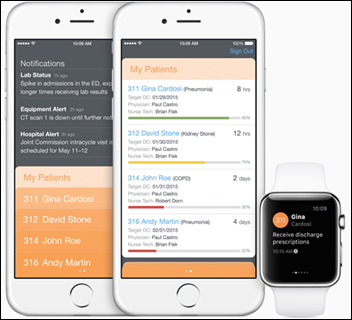
Apple and IBM announce Apple Watch support for their Hospital RN app that I assume nobody is actually using yet.
A group of Kansas City high school and college students develops a wayfinding app for Children’s Mercy Hospital that brilliantly works around the lack of GPS signal penetration in hospitals by calculating routes based on the user’s manually entered “what do you see around you” visible landmarks, such as a room number or department name.
Other
An interesting Modern Healthcare analysis finds that 23 percent of doctors who prescribed at least $1 million worth of a given drug to Medicare patients were paid directly by the manufacturers of those drugs via consulting fees. For example, a since-indicted neurologist who directed $6.4 million in taxpayer spending for a pain relief drug was paid $56,000 by the drug’s manufacturer for various non-research services. It’s easy to determine which doctors hold an unhealthy appreciation for a given drug despite lack of evidence of its superiority, although much harder to peg their motivations to personal benefit.
USA Today profiles patient advocate Regina Holliday.
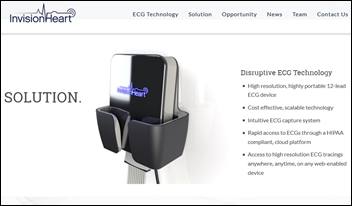
The FDA approves the marketing of InvisionHeart’s mobile, cloud-based ECG solution.

The Houston newspaper covers the practice of suing patients by Memorial Hermann’s Texas Medical Center. An uninsured oncology nurse patient who didn’t get a bill from the hospital found a lawsuit notice taped on her home’s front door but even then couldn’t get an itemized bill because the hospital’s two-year-old records had been archived. She finally found out that she had been charged $32,000 for two nights of observation, which the hospital wanted paid along with legal fees and interest. An attorney who represents the patients the hospital sues (it files more patient lawsuits than all other area hospitals) says nobody told them about charity care while they were in the hospital and the lawsuit documents always have the itemized medical charges redacted.
Former Beth Israel Deaconess Medical Center CEO Paul Levy names names in saying that the noble Triple Aim has been hijacked by big hospitals to suit their own ambitions, such as ACOs that are usually formed by economically inefficient health systems that wrest patient control from physician practices that might otherwise help them choose a hospital based on outcomes and costs, sticking consumers with the resulting loss of choice and higher costs. The places he calls out but also warns that it’s not just them by any means:
Places like Mayo Clinic, investing $180 million in a proton beam facility when there are similar facilities within easy traveling distance for those very few families who can benefit clinically from them. Places like North Shore-Long Island Jewish, belying its stated strategic objectives ("to realize cost efficiencies and ensure patient safety through adherence to best practices") by providing space, support, and publicity for a prominent doctor who affirmatively advocates overuse of diagnostic tools. Places like the University of Illinois-Chicago, the University of California, and dozens of others who gladly accept "walking around money" for themselves and their surgeons from a medical equipment supplier to invest in market-share-growing robotic surgery.
Levy explains from one of his previous posts:
It’s not that the doctors and nurses are any less caring or dedicated, but rather that the leaders of these centers have become calcified with regard to their social mission. They focus instead on expanding market share, growing margins, and attracting philanthropists to contribute to unnecessary and flamboyant edifices. They have no real interest in reducing costs, but rather in obtaining and securing revenue streams to cover ever-increasing costs. Most importantly, they neglect the harm they cause to patients in their facilities, preferring to assert that they deliver high quality care without being willing to be transparent with regard to actual clinical outcomes.
Weird News Andy calls this story “worst nurse cursed.” A London hospital nurse gets a life sentence for overdosing 21 hospital patients with insulin, killing two of them, by injecting it into stock IV bags and allowing other nurses to earn undeserved guilt by unwittingly administering them.
Sponsor Updates
- VBP Monitor publishes “Exchange and Narrow Network Dominance: Market Implications for Healthcare Providers” by Valence Health Co-Founder/COO Todd Stockard.
- Divurgent will host a cybersecurity dinner discussion with John Gomez of Sensato May 28 in New York City.
- MEA/NEA CEO Lindy Benton publishes an article announcing that CMS records show that the company has exchanged 425,000 unique medical records via esMD (electronic submission of medical documentation), more than any other vendor.
- PatientKeeper will showcase its physician workflow software at the 2015 International MUSE Conference that started Tuesday in Nashville.
- AirStrip offers “Keeping Up with (and Getting Ahead of) an Every-Changing Healthcare Model.”
- Caradigm offers “Rethinking the Business of Healthcare.”
- Inc. takes a look at the ways in which CommVault keeps its employees happy and healthy.
- CoverMyMeds will exhibit at AMIA’s iHealth 2015 Conference May 28-29 in Boston.
- CitiusTech, CTG and Cumberland Consulting Group will exhibit at AHIP 2015 June 3-5 in Nashville, TN.
- Baystate Health CMIO Neil Kudler, MD breaks down his four-pillared approach to population health management in a new Medicision video.
- Besler Consulting explains that “Rebilling Medicare claims outside of timely filing is possible.”
- An Israel-based business website covers MedCPU’s participation in a delegation of Israeli digital healthcare companies visiting the US.
Contacts
Mr. H, Lorre, Jennifer, Dr. Jayne, Dr. Gregg, Lt. Dan.
More news: HIStalk Practice, HIStalk Connect.
Get HIStalk updates.
Contact us online.



















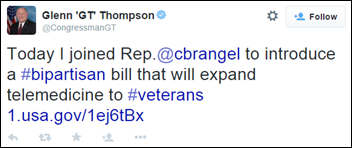



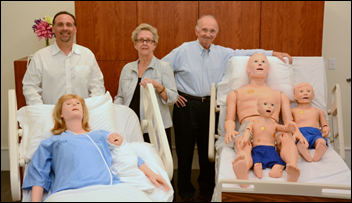

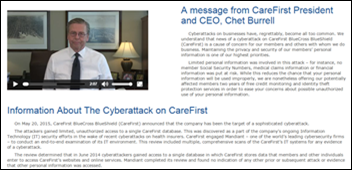


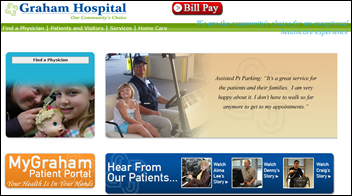





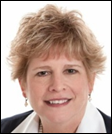

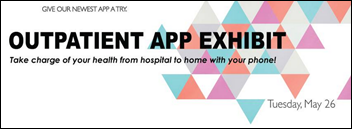



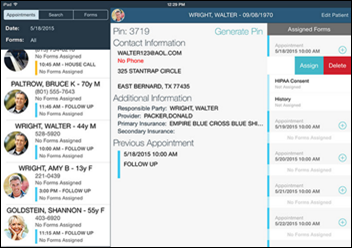












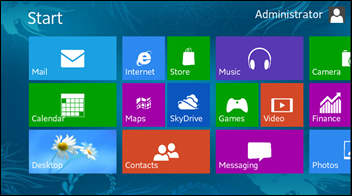










I hear you, and I agree—HIMSS is definitely facing some big challenges right now. The leadership and governance issues you…